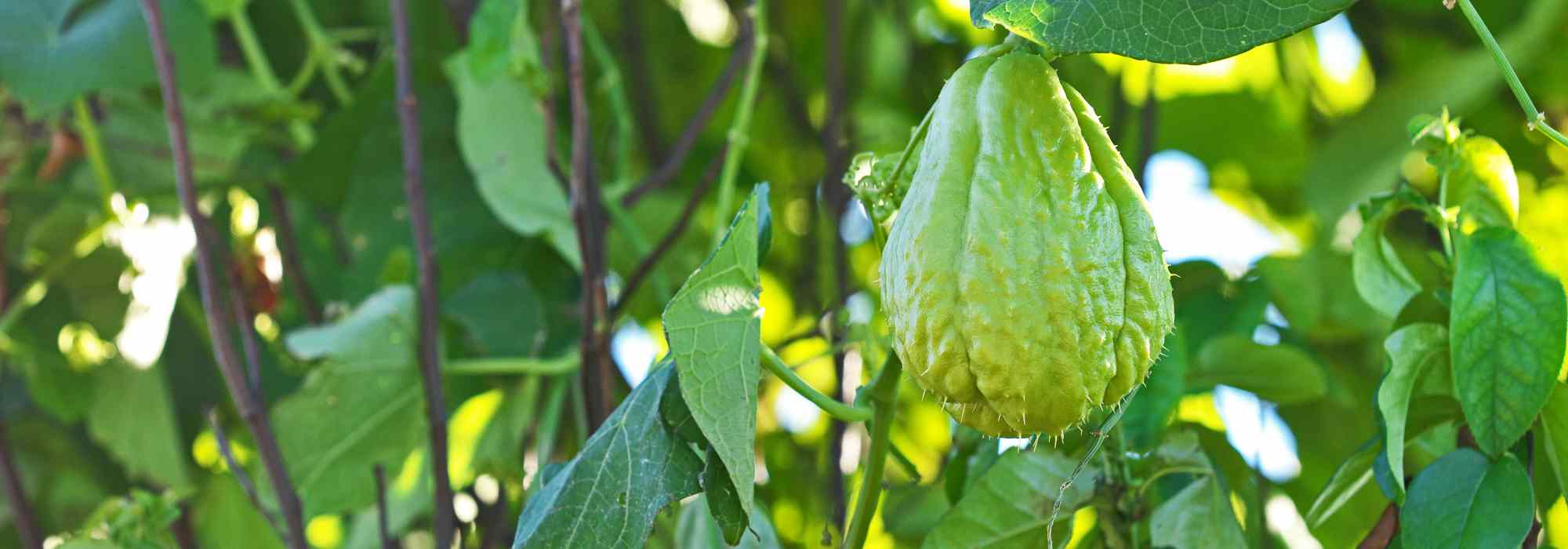
Chayote or christophine: planting, care, and harvesting
Contents
Chayote in a nutshell
- chayote is a vegetable-fruit from the Cucurbitaceae family with a flavour similar to that of courgette.
- It is a perennial tuberous plant of exotic origin, making it sensitive to cold.
- It has creeping or climbing stems that can reach several metres in length.
- Very popular in the Caribbean, the chayote can be enjoyed raw or cooked.
- Its tubercles and young shoots are also edible.
- It is a highly productive plant that requires regular watering.
The word from our expert
With a shape somewhere between a green pear and an avocado, the chayote (Sechium edule), also known as christophine, chouchou, or mirliton, is an exotic fruit-vegetable from the Cucurbitaceae family that can be eaten raw or cooked. Its flavour is reminiscent of courgette. The difference is that in the chayote, every part is edible! From the young shoots to the tubercles, and of course the fruits.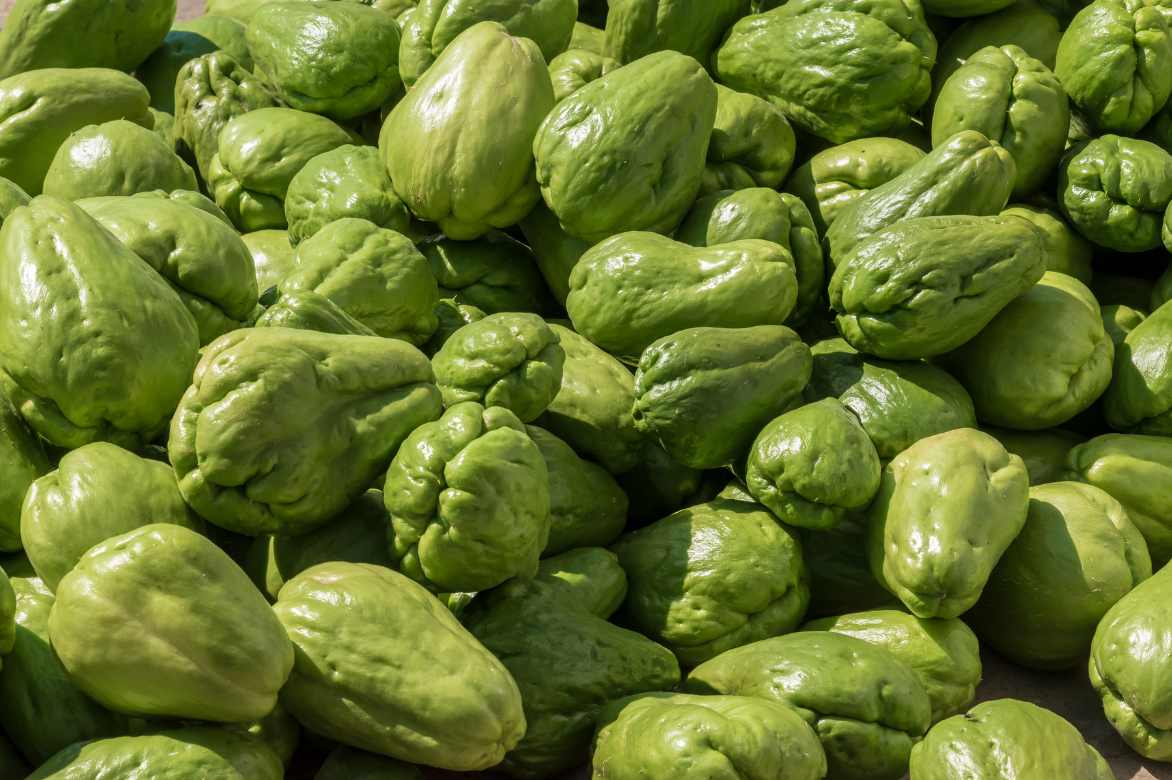
Originally from tropical regions, the chayote is not very hardy, but with proper winter protection, its tubercles can survive the cold. It is therefore a perennial plant due to its tuberous stump. The chayote also has the unique characteristic of being a viviparous plant, meaning its single seed germinates inside the fruit. This is why the entire fruit must be planted to grow a new plant. And, despite its sensitivity to cold, this fruit-vegetable thrives in our latitudes, provided it is planted in a pot and kept warm.
The christophine is also a highly voluble climbing or creeping plant, producing stems with tendrils that can spread over several metres. Its growth is astonishing if it enjoys good growing conditions.
Botany
Botanical data
- Latin name Sechium edule
- Family Cucurbitaceae
- Common name christophine, chayote, chouchou, chuchu, chouchoutte, christophène, mirliton, pépinéla, chocho
- Flowering July-August
- Height up to 5 metres
- Exposure Full sun
- Soil type fertile, deep, fresh
- Hardiness -5 °C
If you have travelled a bit in the Caribbean, you are probably familiar with the christophine, perhaps having tasted it in a local dish. Called chouchou in Réunion, chouchoute in Polynesia, xuxu in Brazil, or mirliton in Haiti, the chayote (sometimes spelled with a single ‘t’) is a plant belonging to the genus Sechium and part of the vast Cucurbitaceae family. The christophine is thus a cousin of courgettes, squashes, and pumpkins, melons, gherkins… but an exotic cousin from far away.
Indeed, the history of the christophine is rooted in Mexico and more broadly in Central America. The Aztecs consumed it regularly. When Christopher Columbus set foot in the Americas, he discovered this vegetable-fruit and promptly brought it back in the holds of his ships. This chayote first travelled to the Caribbean before reaching Réunion. And much later, the Mediterranean basin. The christophine only arrived on the European continent very recently, during the 19th century. From this long journey, the chayote has retained its various names, each more exotic than the last! A perennial plant in its native countries, the chayote is cultivated as an annual in our latitudes. Unless you provide it with a thick winter mulch to protect the tubers from the cold.
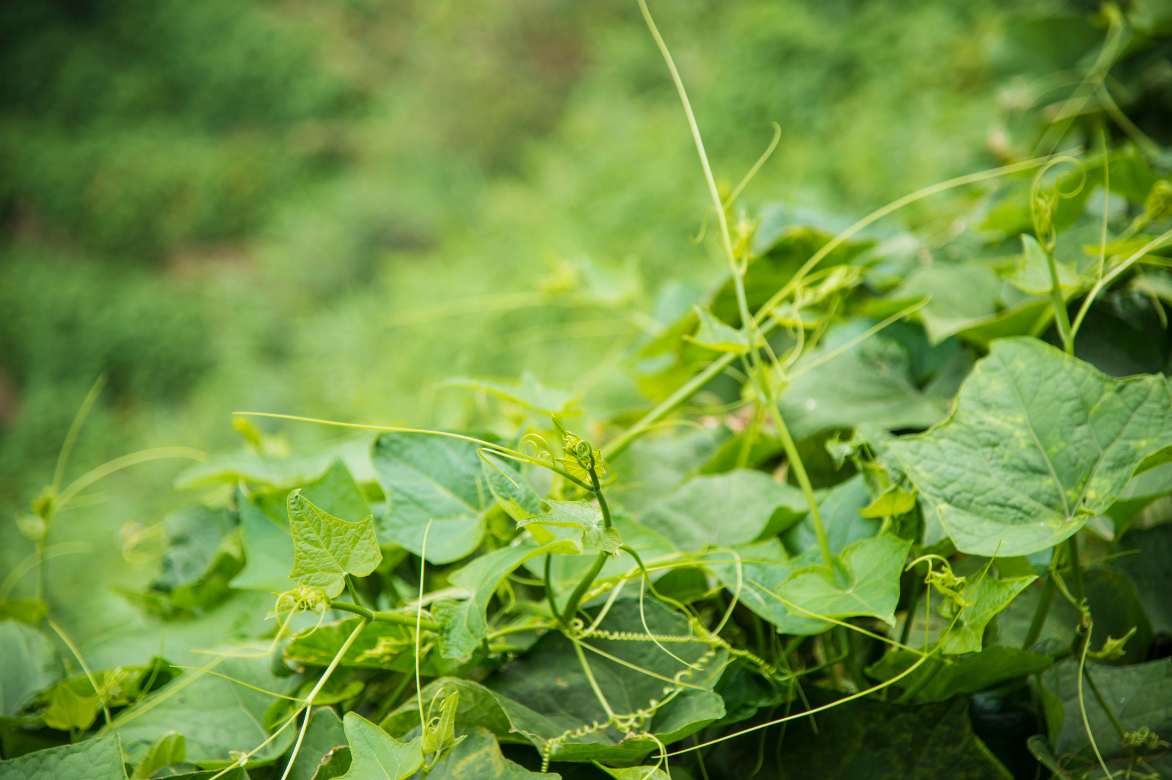
The chayote has very voluble stems
The christophine thus belongs to the Cucurbitaceae family. It is a perennial plant due to its tuberous stump, climbing or creeping. It has slender, branching stems that can reach up to 5 m in length, or even 6 to 10 m if growing conditions are favourable. These stems cling to their support with trifid tendrils. If you wish to train the christophine to climb, you will need to provide a sturdy support like a trellis, arbour, or pergola, but it can also climb a tree thanks to the strength of its lianas.
This perennial tuberous plant has large leaves, cordate at the base and ending in five pointed lobes. The petioles are pubescent, and the leaves generally measure between 10 and 20 cm in length.
As a monoecious plant, Sechium edule produces, between July and August, unisexual inflorescences of white to greenish-yellow colour. The male inflorescences are grouped in panicles of 10 to 30 flowers, while the female flowers are solitary and axillary (appearing in the axil of the leaves). Each flower consists of five fused sepals and five ovate, lanceolate petals. Fertilisation is ensured by insects. Planting a second plant, though optional, can increase fruit yield through cross-pollination.
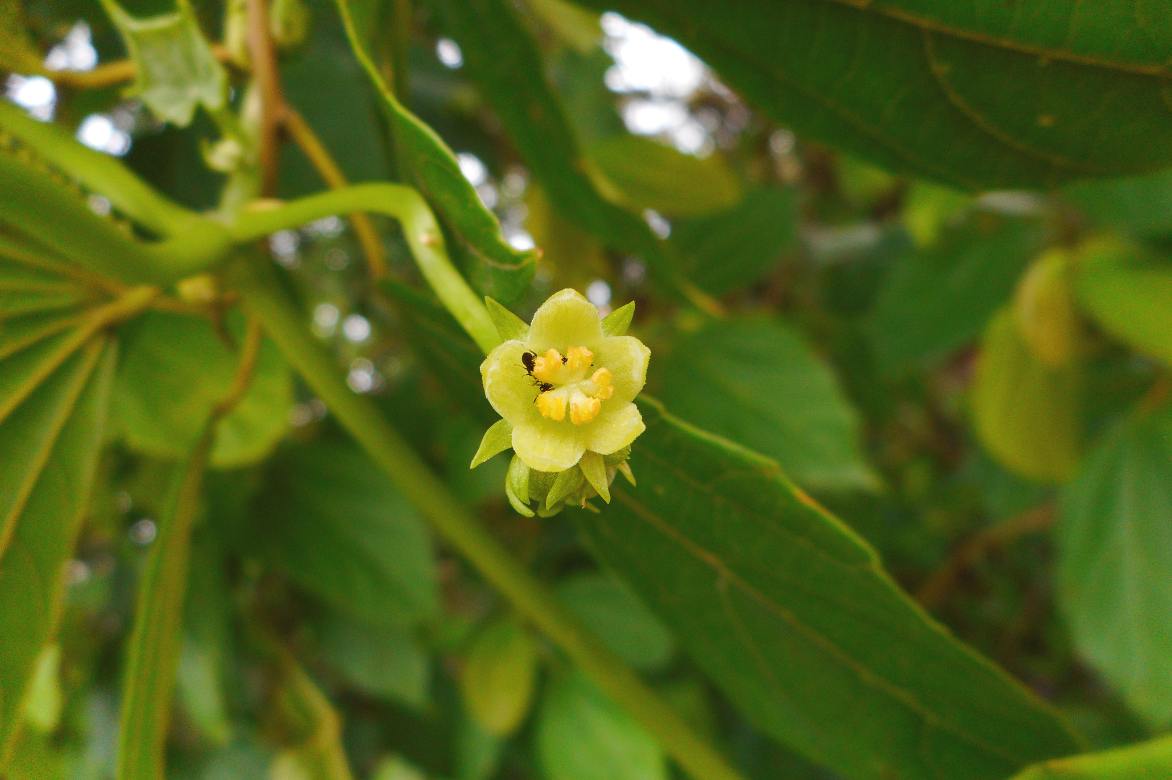
Female flowers of the chayote
The first fruits can appear as early as the end of August, as the fruiting process is rapid. The christophine produces pear-shaped berries, 10 to 15 cm long, with a bumpy and verrucose appearance. These fruits have thick skin, smooth or slightly thorny, ranging in colour from cream to yellow, or a very pale green, almost ivory. These berries ripen between October and November. Each of these fruits contains a single seed, which is edible, and firm white flesh. As a viviparous species, it is this stone that germinates within the fruit itself. It is not uncommon to see young shoots emerging from the slightly open end of the fruits.
Due to its exotic origins, the foliage, stems, and berries of the christophine are frost-sensitive. However, in regions with mild climates, the tubers can remain in the ground, protected by a thick mulch. As spring returns, new shoots will emerge.
Varieties of chayote
There are several varieties of chayote, which explains why its berries can vary in colour (light green, dark green, creamy white, or yellow) and have skin that is more or less thorny. However, in France, the most common variety is the one that produces light green, thorn-free, pear-shaped fruits.

Christophine - Chayote
- Hauteur à maturité 2 m
When, where, and how to plant the chayote?
The chayote can be particularly exuberant. Under the best growing conditions, each plant can produce up to 50 to 80 vegetable-fruits!
Due to its tropical origins, the chayote is sensitive to cold. Planting the fruit must therefore be done in a pot indoors; you will need to wait until there is no risk of frost before transplanting the seedling outdoors. However, in Mediterranean regions, planting the fruit directly in the ground can be considered.
As a reminder, the stone is fused with the fruit, which is why the berry should be planted directly in the soil.
When to Plant It?
Sowing the entire fruit in a pot should be done as early as March in a warm environment, such as a greenhouse, conservatory, or bright room with a temperature of at least 20°C. Alternatively, the fruit can be planted directly in the ground in regions with a very mild climate from April onwards.
Later, the fruit sown in a pot can be transplanted outdoors once all risk of frost has passed, around April to May, depending on the region.
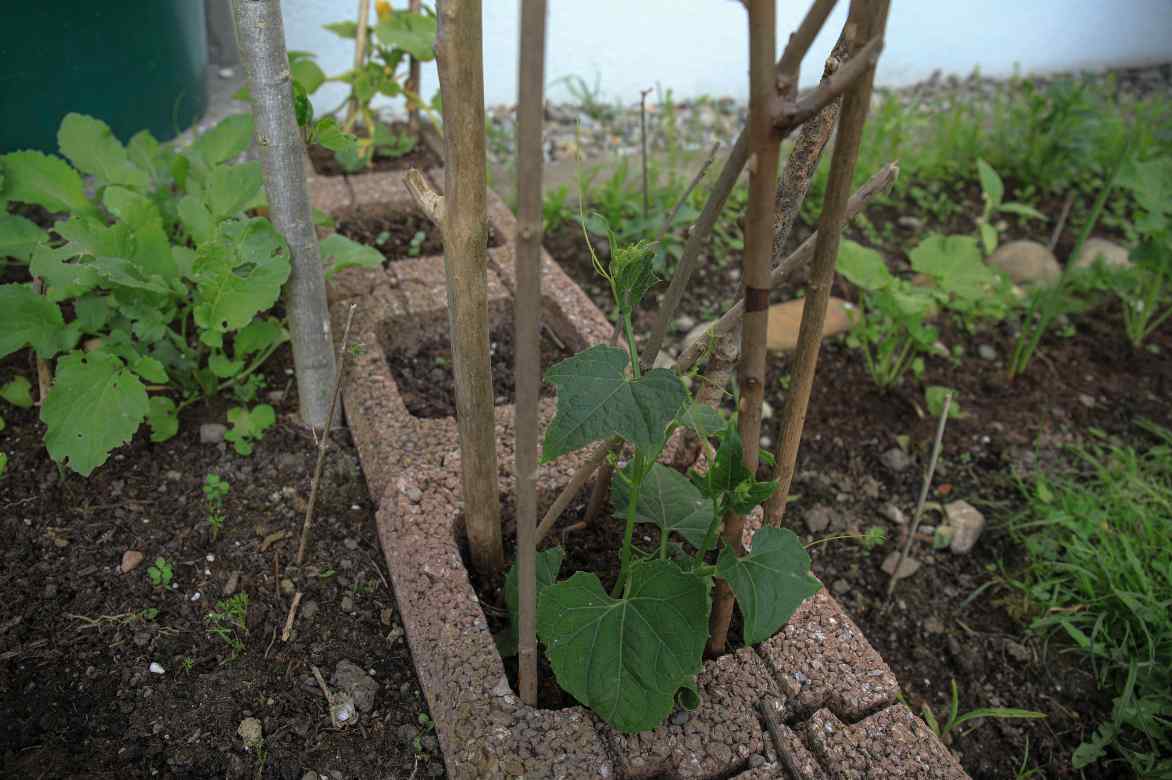
With chayotes, the fruit containing a single seed is planted directly
Planting in a Pot
- Choose a pot at least 30 cm in diameter
- Place a generous layer of clay pebbles at the bottom of the pot
- Fill the pot halfway with good vegetable potting soil, optionally mixed with garden soil and well-rotted compost
- Place the chayote on its side
- Cover with soil, leaving the chayote slightly exposed at the surface
- Water generously
- Place the pot in a sheltered, bright spot without direct sunlight, at a temperature of at least 20°C.
Germination occurs fairly quickly, within a few days.
Transplanting Outdoors
Once the frosts are definitively behind you, the chayote seedlings can be transplanted outdoors. Certain requirements must be met in terms of soil and exposure. The chayote needs sun and warmth. This is why it should be planted in full sun and sheltered from cold northerly winds, for example against a wall or trellis facing south.
For planting, you need deep, loose, well-worked, and light soil. It should also be perfectly drained, fairly moist and humus-bearing, enriched with organic matter (manure, compost, etc.).
How to Plant?
- Work the soil deeply with a garden fork
- Incorporate well-rotted compost or manure
- Dig a hole and place the seedling (or the fruit lengthwise)
- Cover with soil and water thoroughly
- Install a sturdy support for the stems to cling to.
The care of the chayote
Although moderately demanding, the chayote nevertheless requires some care to achieve good fruiting.
It is thirsty and therefore needs regular and abundant watering. The soil must remain consistently moist for proper fruiting. Adding a good mulch at the base of the plant helps retain moisture and reduces the need for frequent watering. Watering should be increased during the summer months.
To control the growth of chayote vines and encourage a bushy habit and abundant fruiting, you can pinch the young plants above the 4th leaf.
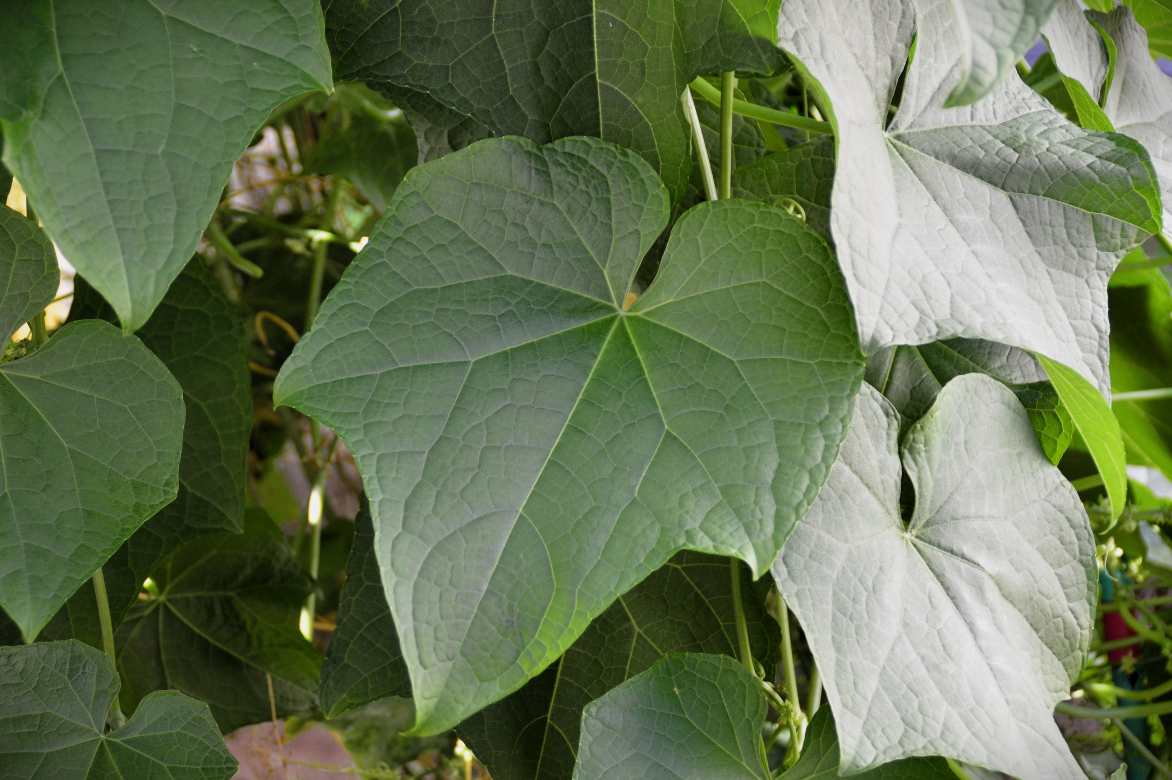
Chayote foliage
Adding compost is recommended during the growing season, when the fruits are forming.
In regions with very mild climates, the tubers of the chayote can remain in the ground. However, they should be protected from the cold with a thick mulch, such as dry leaves and grass clippings.
Diseases and parasitic pests
The chayote is not prone to specific diseases. Being widely cultivated in the Caribbean or Central America, it is accustomed to high humidity levels. However, it can be sensitive to very dry summer heat, which may scorch the foliage and affect fruit production. In extreme heat, the flowers and young fruits may drop.
In terms of parasitic pests, you may occasionally spot red spider mites on the foliage, particularly on the young shoots, but they have little impact on fruit yield. To prevent these pests, you can spray the foliage with cool water to maintain a humid environment. A nettle manure spray or horsetail decoction can also prove effective.
For more information: Red spider mite: identification and treatment.
The propagation of chayote
The propagation of chayote is done by planting the fruit.
Harvest the fruits from your chayote young plants and plant them simply in a pot, under shelter, at a temperature of at least 20°C.
The harvest and storage of fruits
The harvest of chayotes spreads from late August to October or November. The vegetable-fruits must be harvested before the first frosts, which will irreversibly destroy them. In mainland France, as the harvest is often done in one go, sufficient space is needed to store the chayotes. Because, in favourable years, the harvest can be substantial. The vegetable-fruits can weigh between 500 g and 1 kg, and a single liana can produce up to around fifty fruits. At full ripeness, the skin should be thick enough to resist finger pressure.
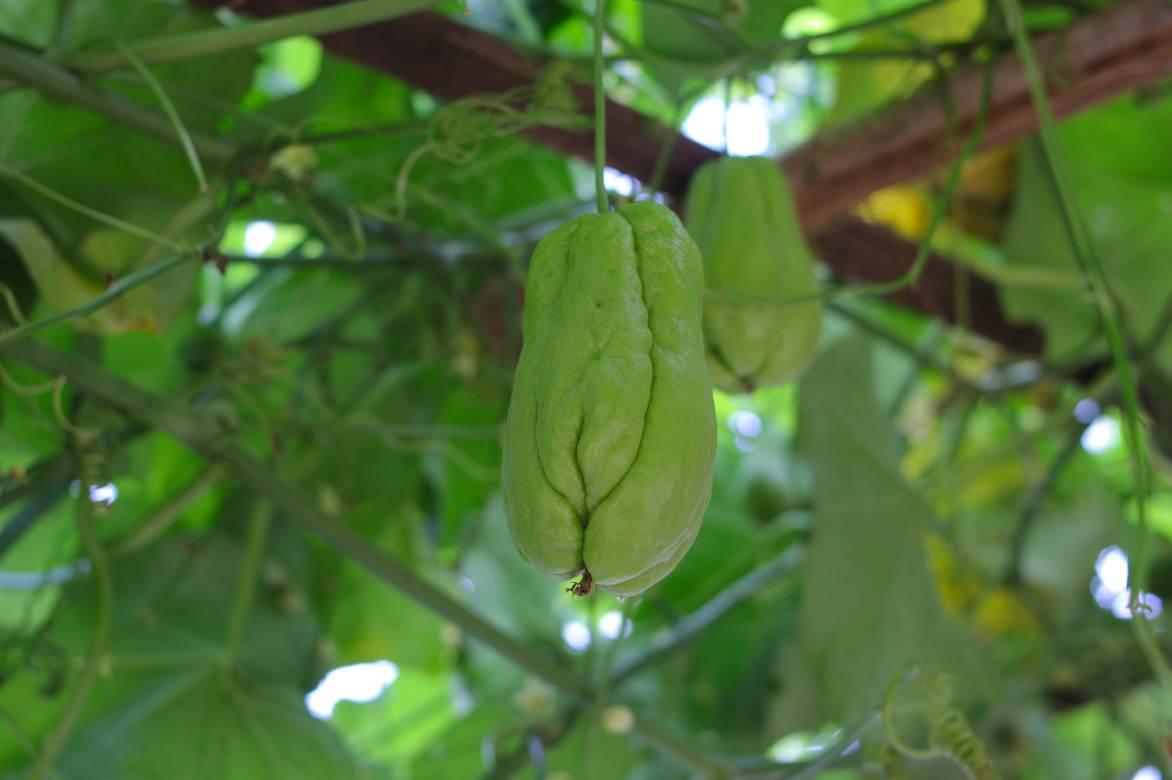
The harvest of chayotes spreads from late August to November
Chayotes can be stored for several months in a dry, cool (around 10 °C), and well-ventilated room, preferably away from light. It is better to spread them out rather than stack them for storage.
→ Read also: How to harvest and store chayotes?
How to cook chayote squash?
In the chayote, everything is good! Indeed, although it is best known for its edible fruits, its young shoots and leaves are also edible. Moreover, chayote is very low in calories and rich in vitamin C, minerals, and fibre.
You can already prepare the young shoots boiled like asparagus or stir-fried and sautéed in a pan. The leaves can be cooked and enjoyed like spinach. Even the tubercles can be eaten fried or boiled in water. However, you must wait at least 7 to 8 years before consuming them. 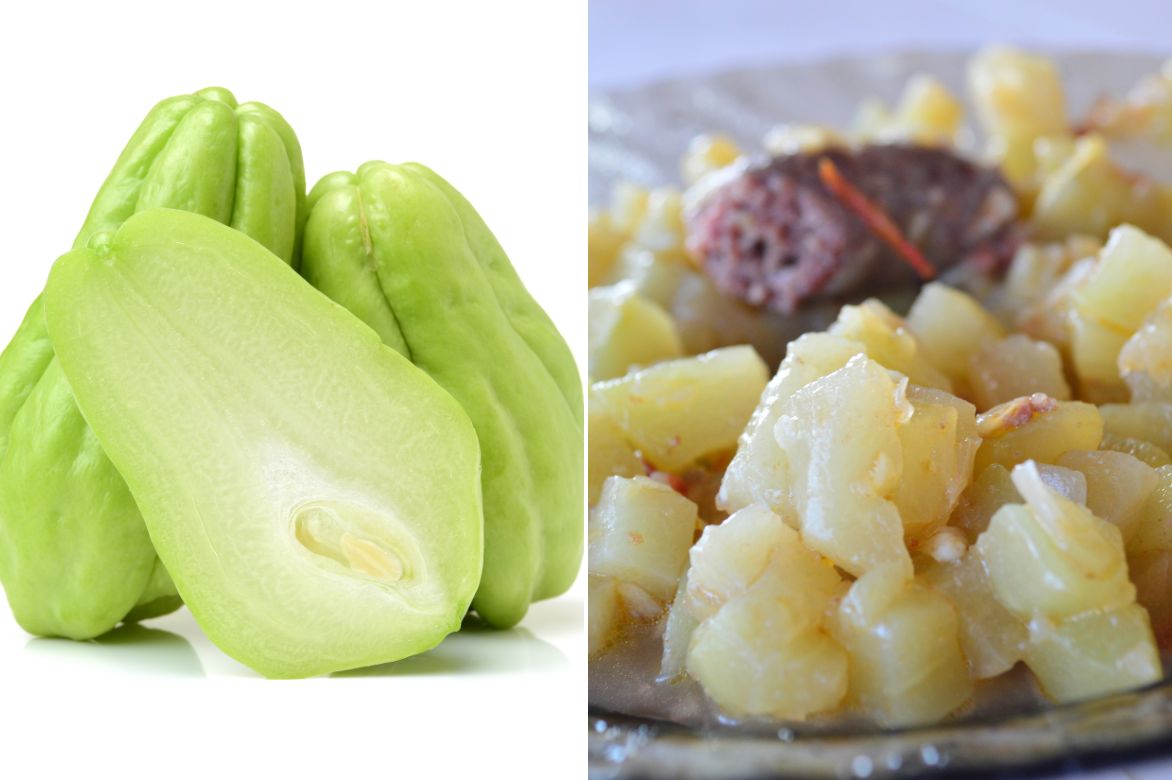
As for the chayotes, they can be eaten raw or cooked. Raw, chayote can be enjoyed grated with a vinaigrette. To eat it cooked, you must first peel it and remove the hard core. You can boil, steam, bake, or fry it to prepare it in gratins, ratatouille, mash, soup… alone or combined with other vegetables or starches (potatoes, mushrooms, onions, leeks…).
You can also incorporate chayote into sweet dishes (cakes, fritters, jams…).
- Subscribe!
- Contents
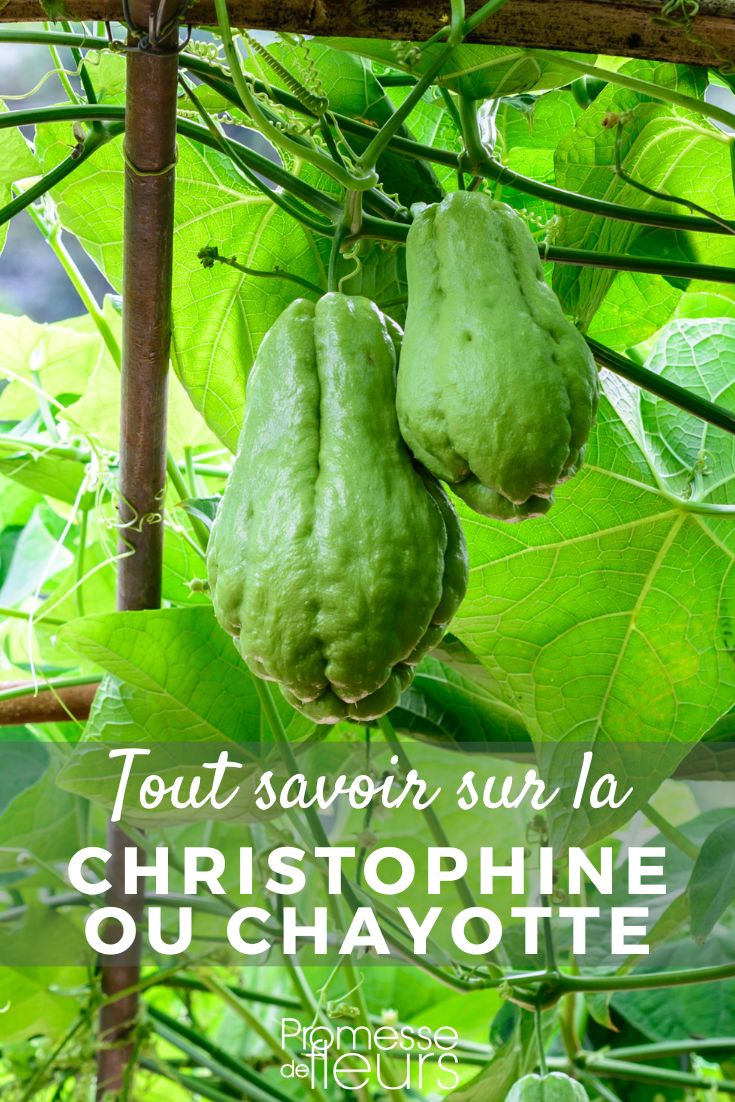































Comments